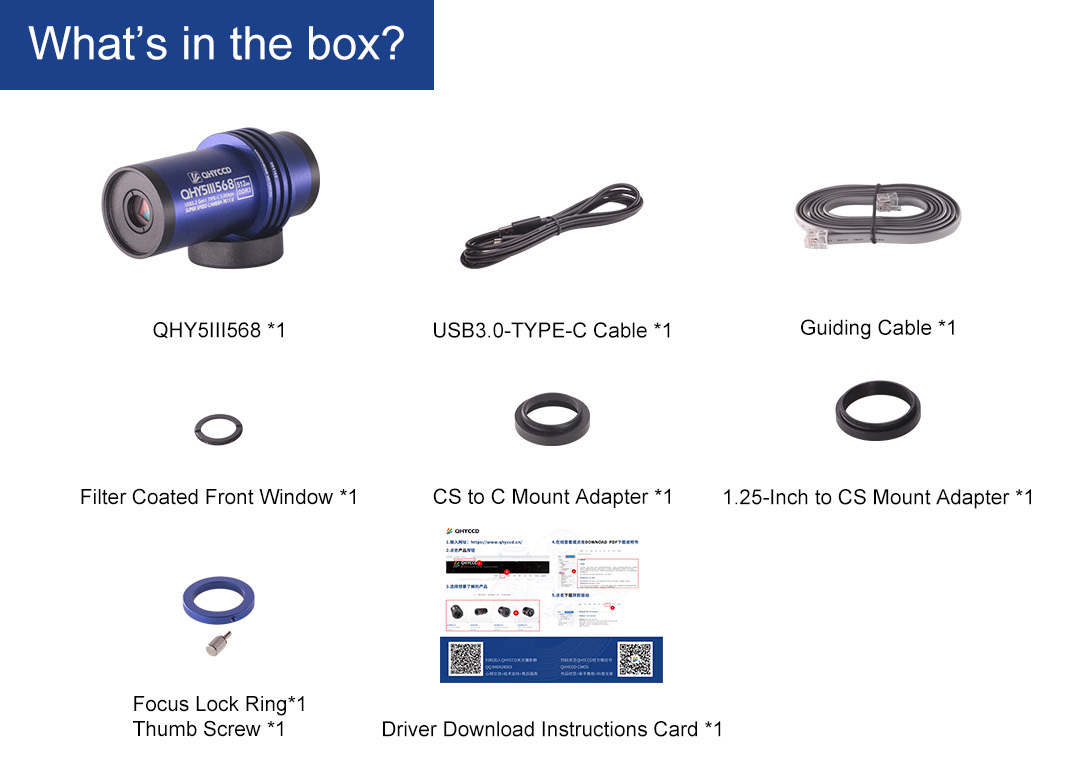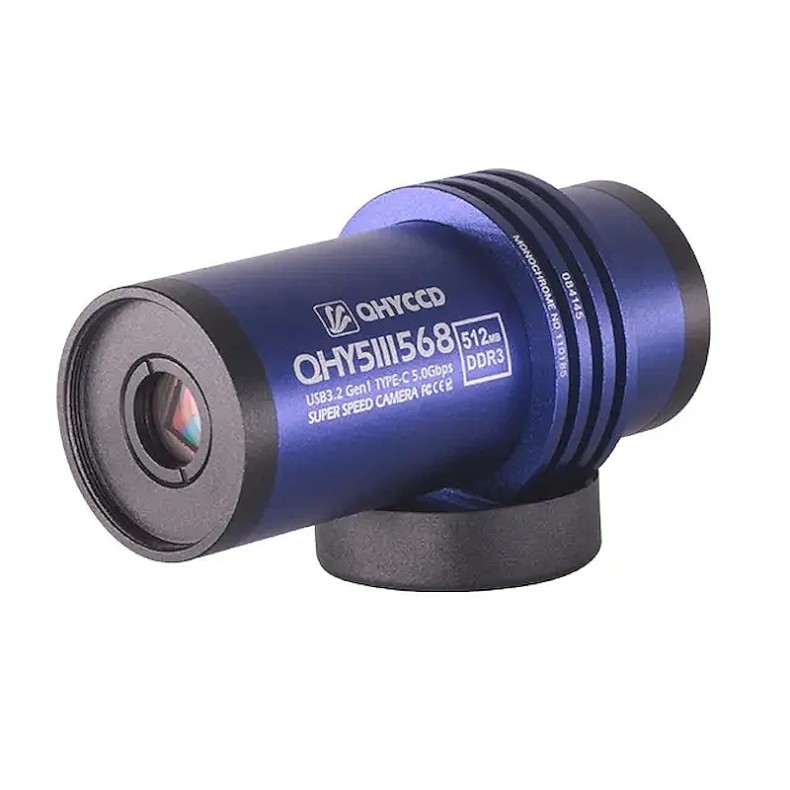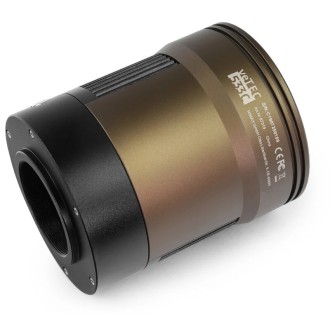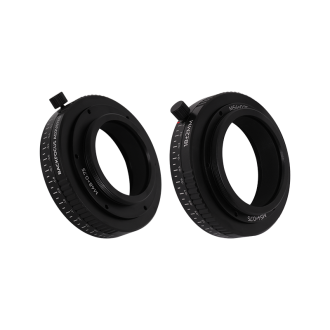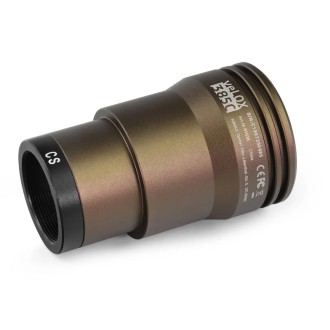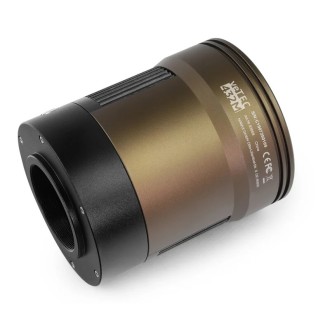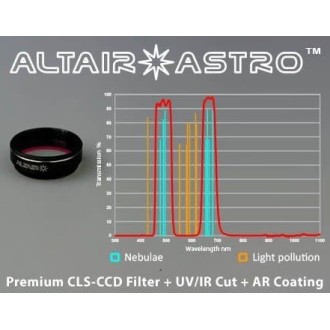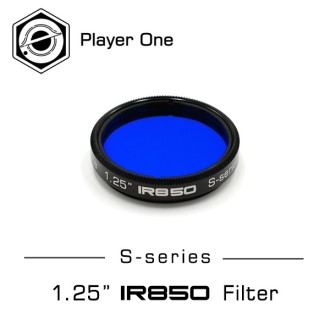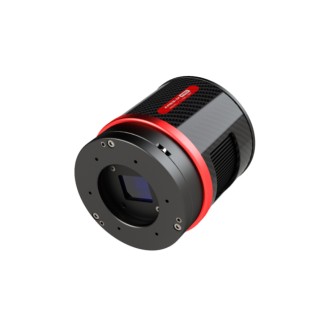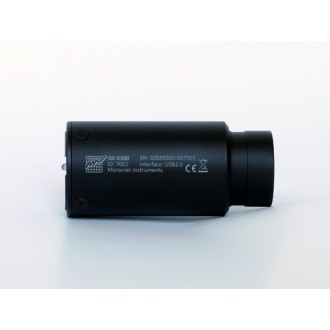The QHY5III568M/C is a back-illuminated planetary and guide camera of the latest 5III V2 series. It uses a global shutter and supports true hardware clustering. It can achieve a super high speed of approximately 304 fps with nearly 1080p resolution. The QHY5III568M/C inherits all the upgrades and improvements of the QHY5III Series Ver. 2 camera lines. Single camera version.
| Carrier | Description | Estimated Delivery | ||
|---|---|---|---|---|
 |
Home delivery - International | Home delivery - International |
Friday, 23 May - Friday, 30 May |
|

Home delivery - International
Home delivery - International
Estimated delivery:
Friday, 23 May - Friday, 30 May
Note:To activate the load grouping function, select "Reading mode: 2 × 2 FD grouping" instead of the normal grouping function included in the software (taking SharpCap, for example). If you are using a color version, first deactivate the "Debayer preview".
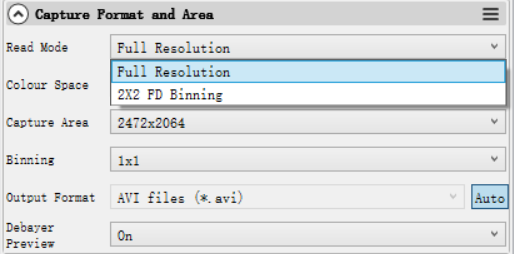
BSI
One of the benefits of the back-illuminated CMOS structure is improved sensitivity. In a typical front-illuminated sensor, photons from the target entering the photosensitive layer of the sensor must first pass through the metal wiring that is embedded just above the photosensitive layer. The structure of the wiring reflects some of the photons and reduces the efficiency of the sensor.
In the back-illuminated sensor, light is allowed to enter the photosensitive surface from the reverse side. In this case, the integrated wiring structure of the sensor is located below the photosensitive layer. As a result, more incoming photons hit the photosensitive layer and more electrons are generated and captured in the pixel well. This ratio of photon to electron production is called quantum efficiency. The higher the quantum efficiency, the more efficient the sensor is at converting photons to electrons and, therefore, the more sensitive it is at capturing an image of something faint.
Global shutter
Unlike the rolling shutter technology used in most CMOS cameras, a global shutter ensures that the exposure time for the entire image area is uniform, starting and ending at exactly the same time. This type of shutter is ideal for high-precision applications. For high-speed moving objects and atmospheric agitation, the global shutter can generate distortion-free images and achieve high image quality.
Binning FD (hardware binning)
Unlike most CMOS cameras, the camera supports FD binning, which is true hardware pixel binning similar to CCD cameras.
In the past, only CCD sensors were capable of hardware clustering. Most CMOS cameras used digital binning, which was based on binning algorithms. The disadvantage of this grouping method (using 2*2 grouping as an example) is that while the signal is amplified 4 times, it also introduces twice as much noise, resulting in only a doubling of the signal-to-noise ratio. and then the frame rate cannot be improved. In contrast, the hardware combination does not amplify the additional noise, resulting in a direct 4-fold improvement in the signal-to-noise ratio. Moreover, the frame rate can be greatly increased even if the ROI function is not enabled.
512MBDDR3
The QHY5III (Ver. 2) series planetary and guidance cameras are equipped with a 512 MB DDR3 image buffer that can effectively reduce the pressure on the computer transmission, a great help for planetary photography that often requires writing a large amount of data in a short period of time. Some deep sky astrophotography cameras currently on the market have only 256 MB, for example.
In comparison, the 512 MB DDR3 memory of the new 5III series cameras (Ver. 2) represents a significant improvement.
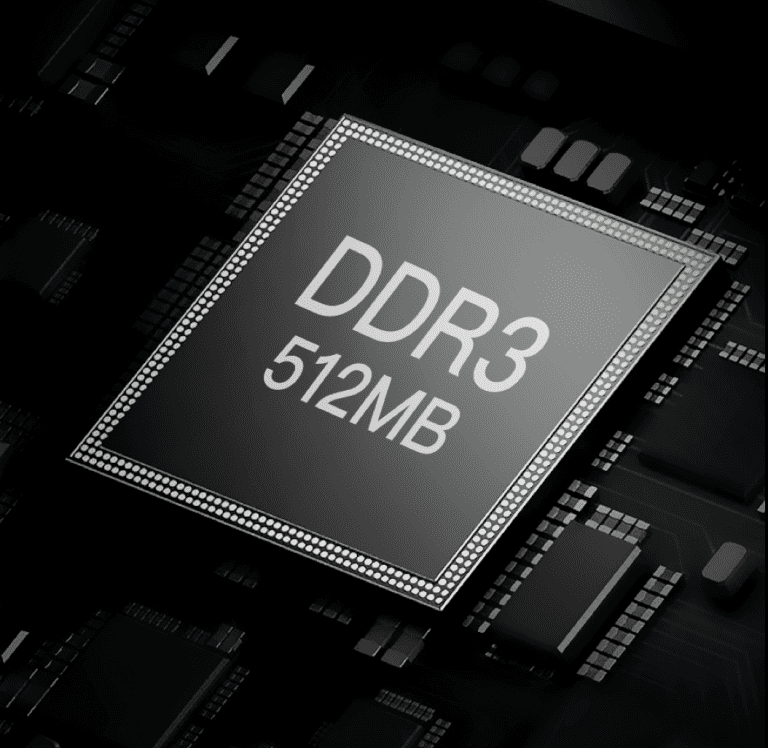
New front design with improved compatibility
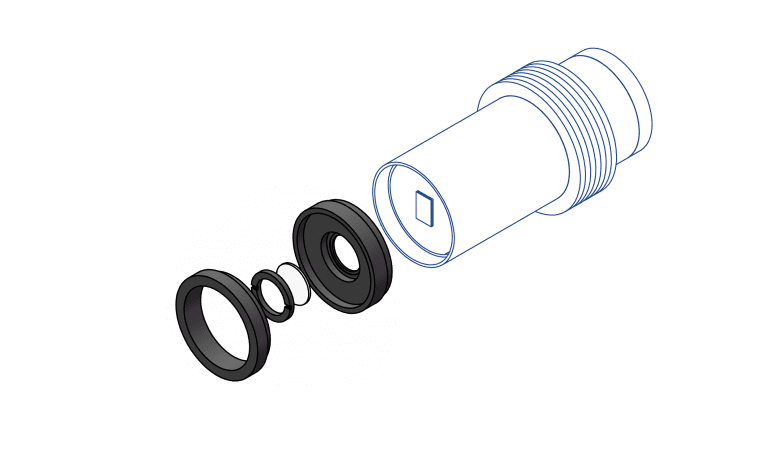
The QHY5III (Ver. 2) series cameras have adopted a new front design with improved compatibility. Here we only take the QHY5III200M as an example, however, ALL future V2 cameras share these features.
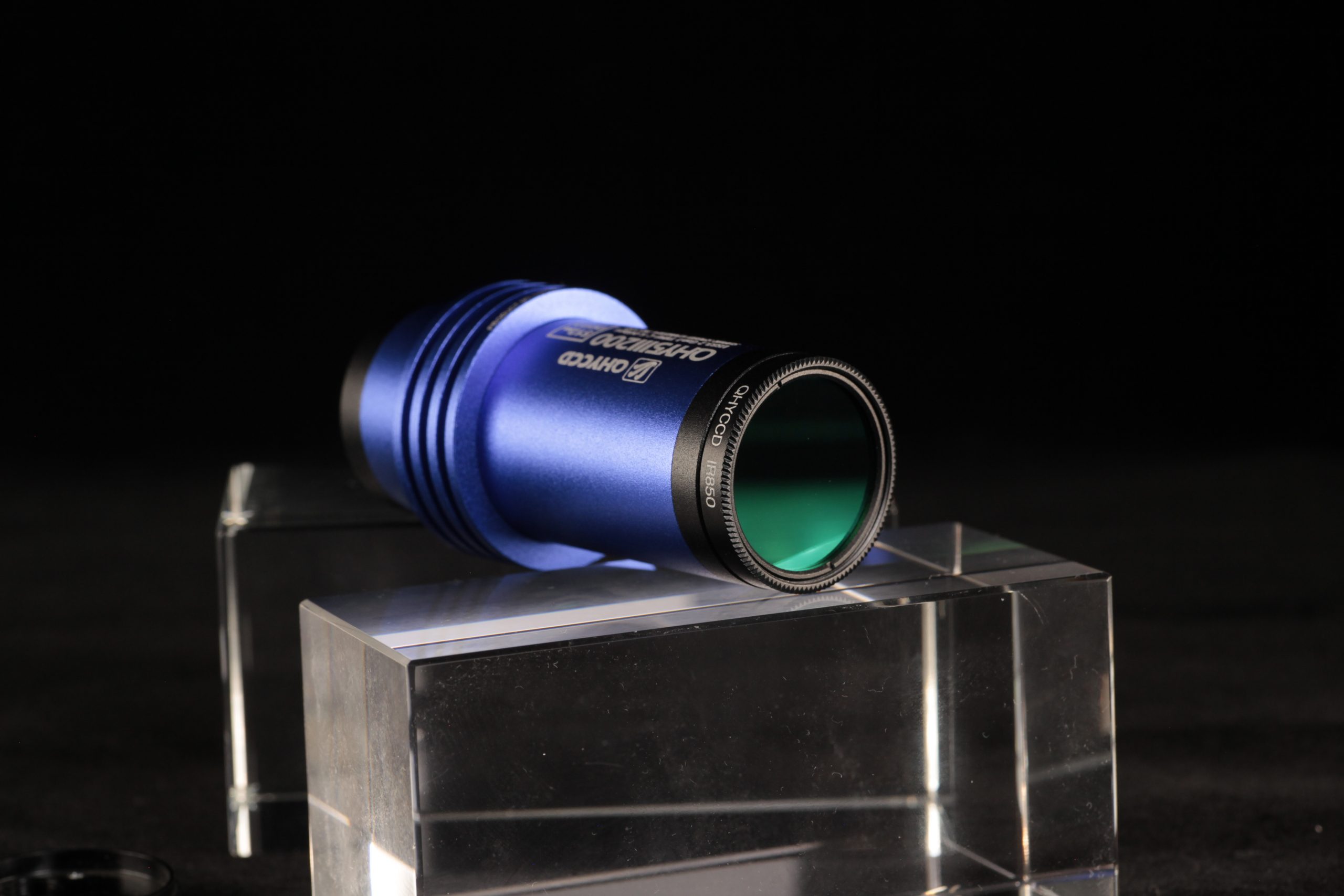
The BFL of the V2 camera is only 8mm, which means you can easily compare a V2 camera to your OAG. The basic top adapter includes 1.25-inch threads and you can still use your 1.25-inch filter.
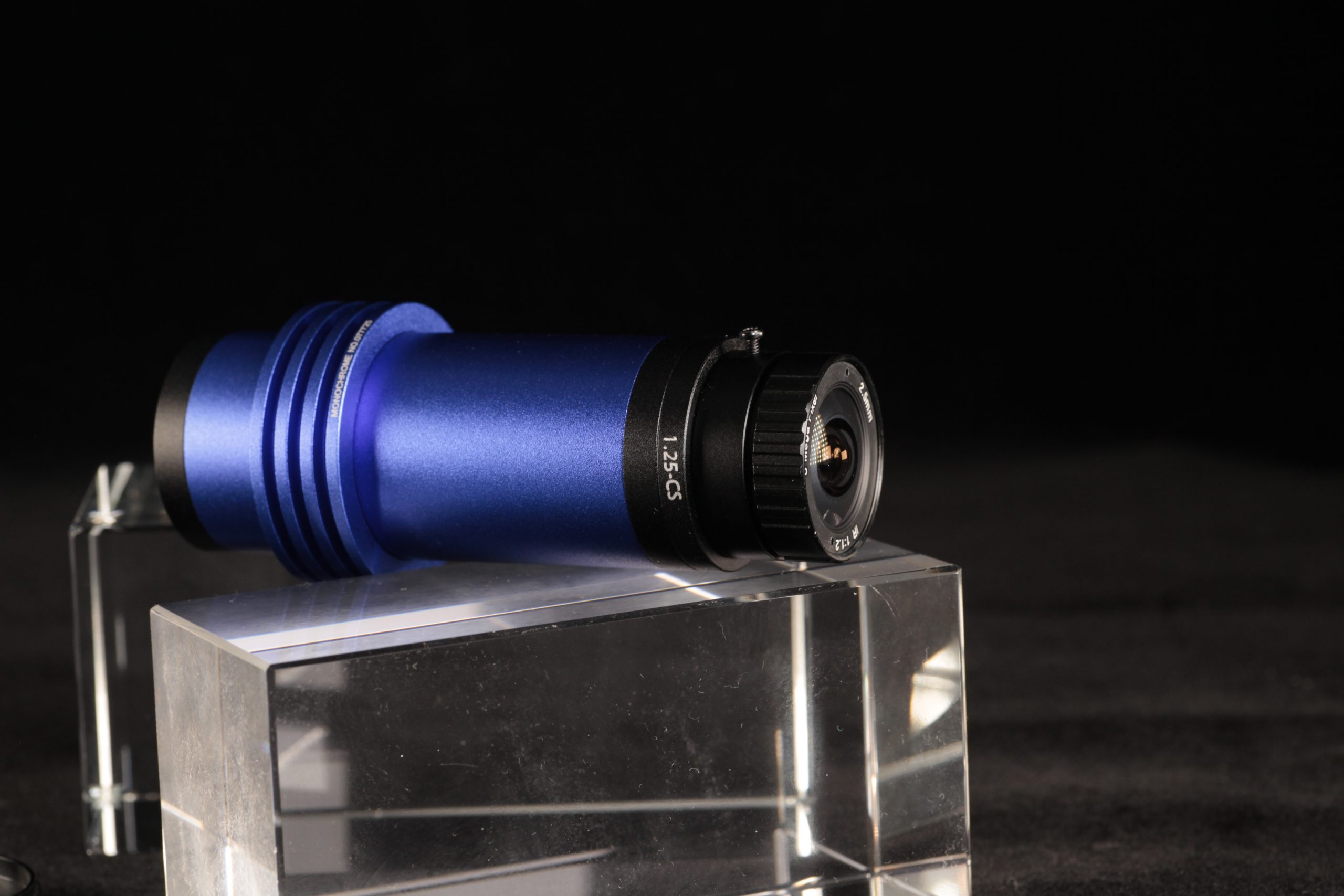
The upper adapter glass of the V2 can be easily changed. One of the advantages of interchangeable top glasses is that you can use a filter even if you use Lens. You can add a 1.25-inch CS adapter to attach CS lenses or add a second CS-C lens for C-mount lenses. The two adapters are all standard V2 cam accessories.
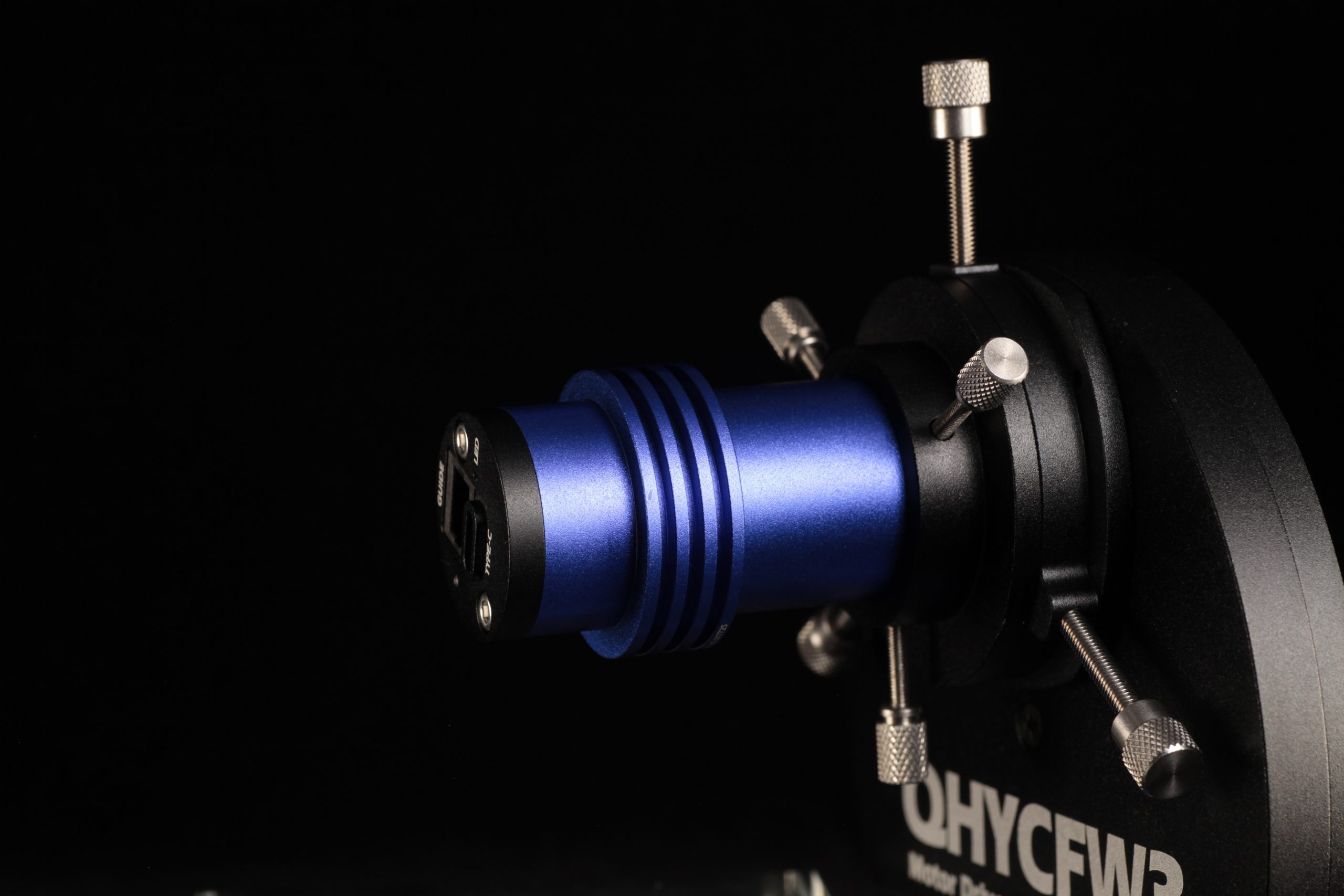
By the way, there is a 1.25-inch filter wheel adapter to connect your mono planetary camera with the QHYCFW3-S filter wheel.
USB 3.2 Gen1 Type C interface
All new QHY5III (Ver.2) series cameras use the USB3.2 Gen1 Type-C interface. Compared to the USB3.0 Type-B interface used in the previous generation, the Type-C interface has a longer life and is more flexible.
Tips: It is recommended to use the official QHYCCD standard C-type data cable. Since the market is flooded with a large number of poor quality type C cables, occasional use may result in camera malfunction. If you use your own replacement cable, make sure it is a high quality cable.
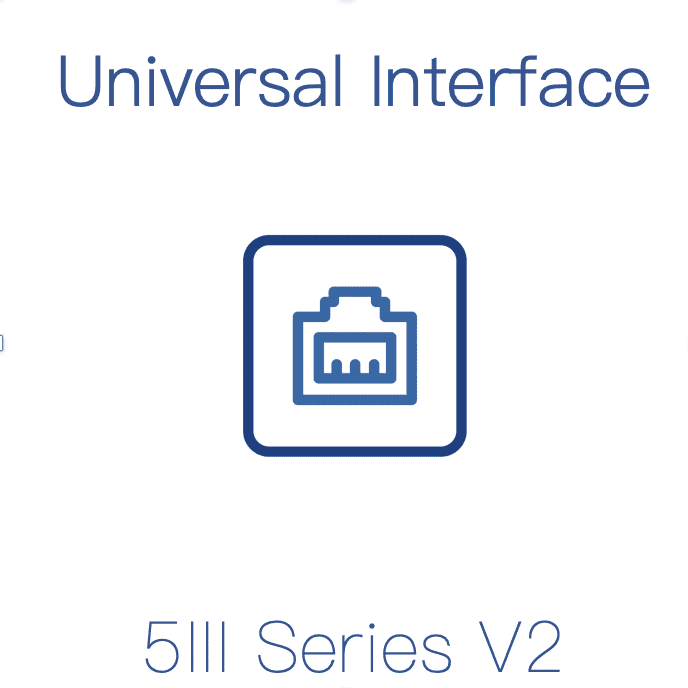
LED indicator
The new QHY5III (Ver.2) camera series is equipped with a status indicator on the back of the camera. If the camera experiences an abnormal condition, the multi-color indicator light will help determine the situation with different colors indicating different conditions. During normal operation, this indicator light is off, so there is no need to worry about the light contaminating the image.
Sample images
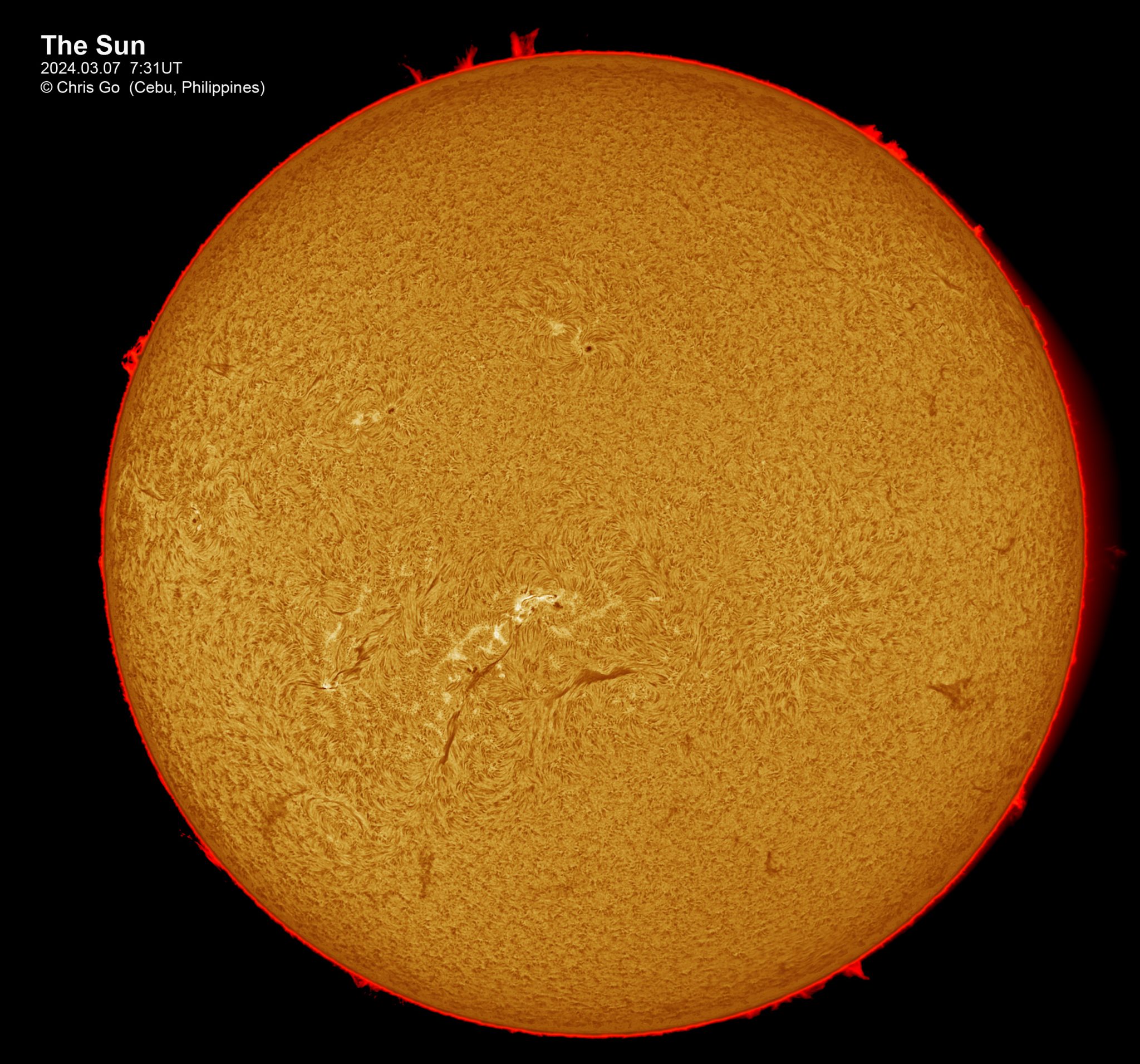
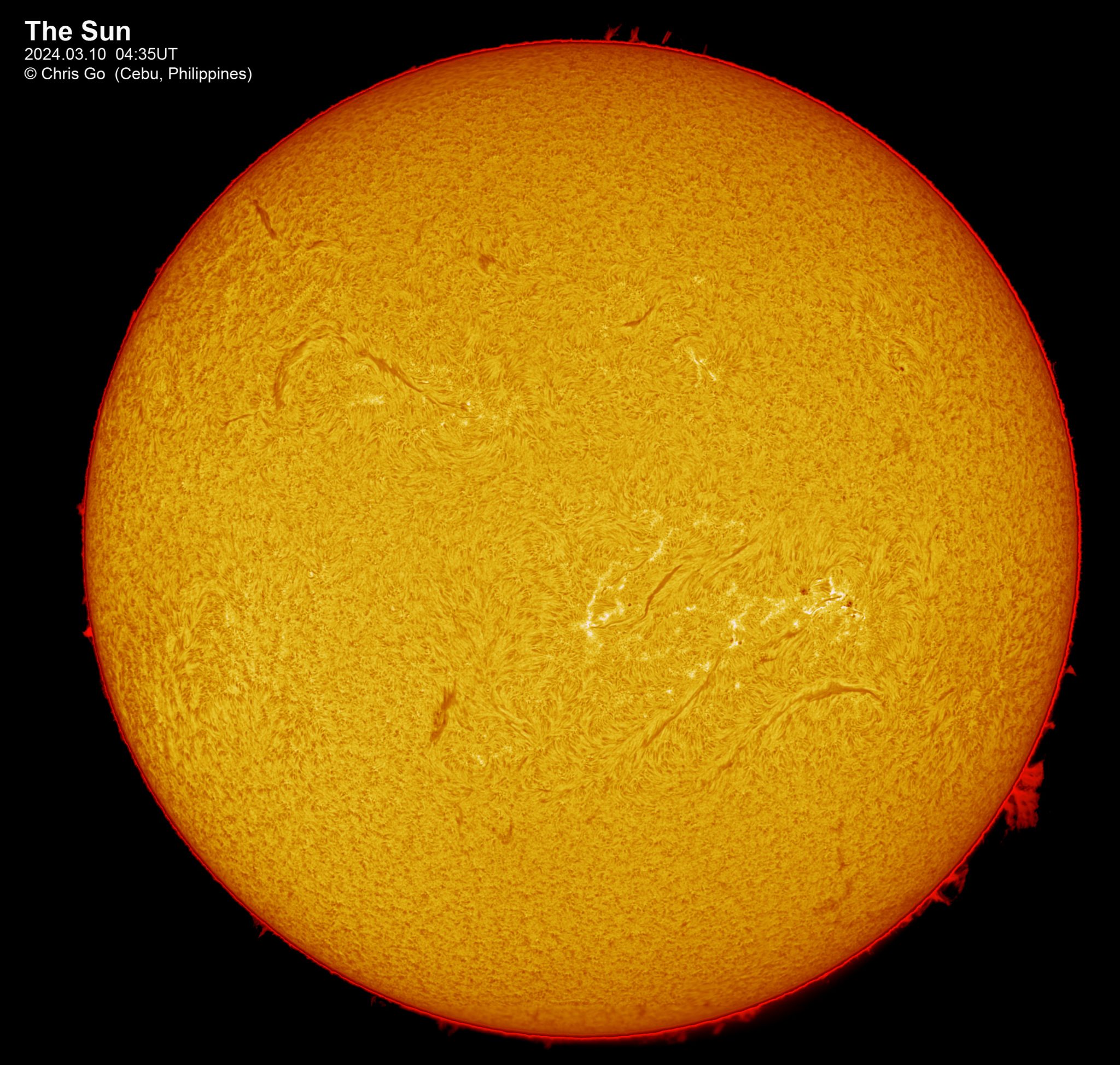 By Christopher Go,QHY5III568M + Stellarvue SV70 + Coronado SM60
By Christopher Go,QHY5III568M + Stellarvue SV70 + Coronado SM60
Specifications
| Model | QHY5III568M/C |
| Image sensor | Sony IMX568 |
| Single Color/Color | Both available |
| FSI/BSI | BSI |
| Sensor size | 6.7 mm x 5.6 mm (type 1/1.8) |
| Pixel size | 2.74 μm*2.74 μm |
| Effective pixel area | 2472*2064 |
| Effective pixels | 5.1 megapixels |
| Total well capacity | Full resolution: 8.8ke- 2X2 FD Binning: 9,7ke- |
| Read noise | Full resolution: 1.5e- to 2.3e- 2X2 FD Binning: 1.6e- to 2.7e- |
| ADVERTISEMENT | 12 bits (output as 16 bits and 8 bits) |
| Built-in image buffer | 512 MB DDR3 memory |
| Full frame rates | 64.9 fps at 8 bits, 34.5 fps at 16 bits |
| Return on investment (ROI) frame rates | 1920X1080, 115.6FPS@8bit, 62.1FPS @16bit 800X600, 187.2FPS@8bit, 100.5FPS@16bit 480X480 , 221.2FPS@8bit, 118.5FPS@16bit2X2 FD Binning 1236X1032, 2 FPS at 8 bit, 142.5 FPS at 16 bit 800X600, 439.6 FPS @8 bits, 221.9 FPS @ 16 bits 480X480, 519.6 FPS @ 8 bits, 262.8 FPS @ 16 bits |
| Exposure time range | 11μs-900sec |
| Type of louver | Electronic global shutter |
| Computer interface | USB3.0 type C |
| Port guide | Standard ST-4 style |
| Telescope interface | 1.25 inches, with CS and C-Mount |
| Optical window | AR anti-reflective glass (5III568M) IR cut-off filter (5III568C) |
| Additional filter | - |
| Rear focal length | 17 mm (with adapter); 8 mm (without adapter) |
| Weight | 80g |
Curves
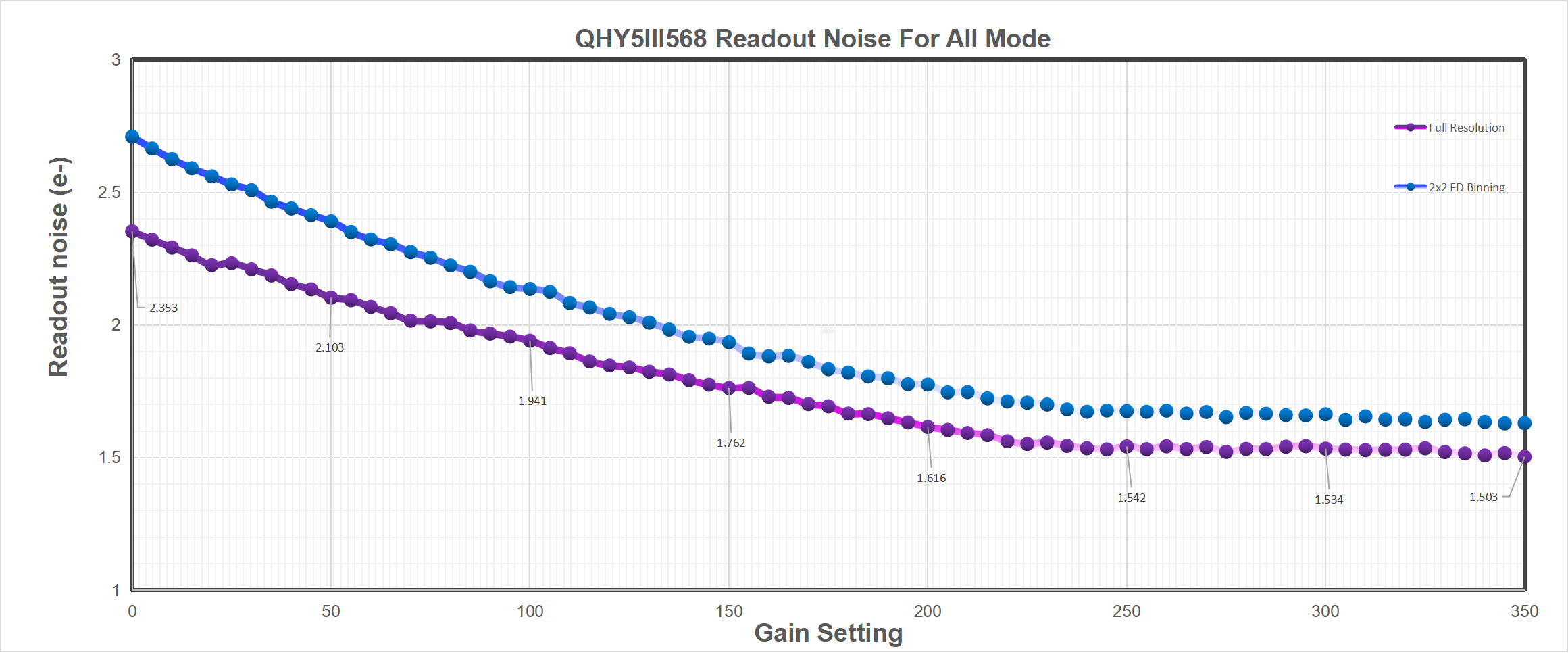
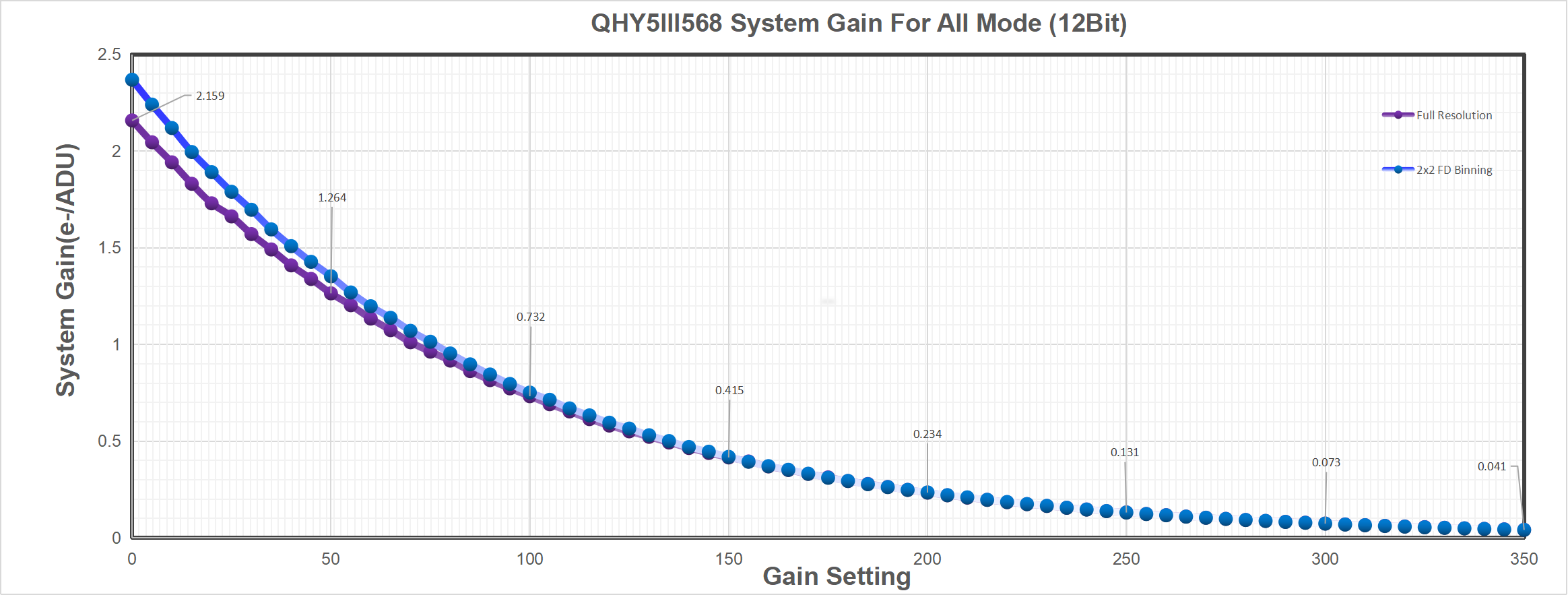
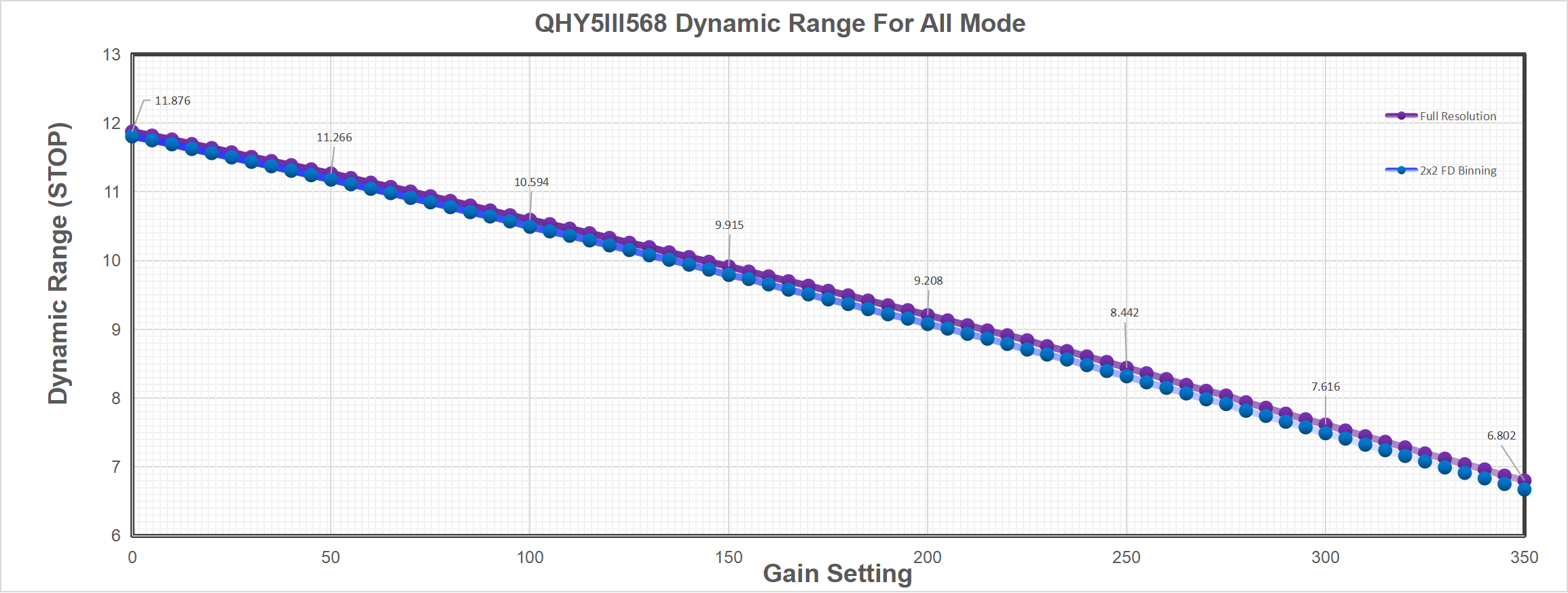
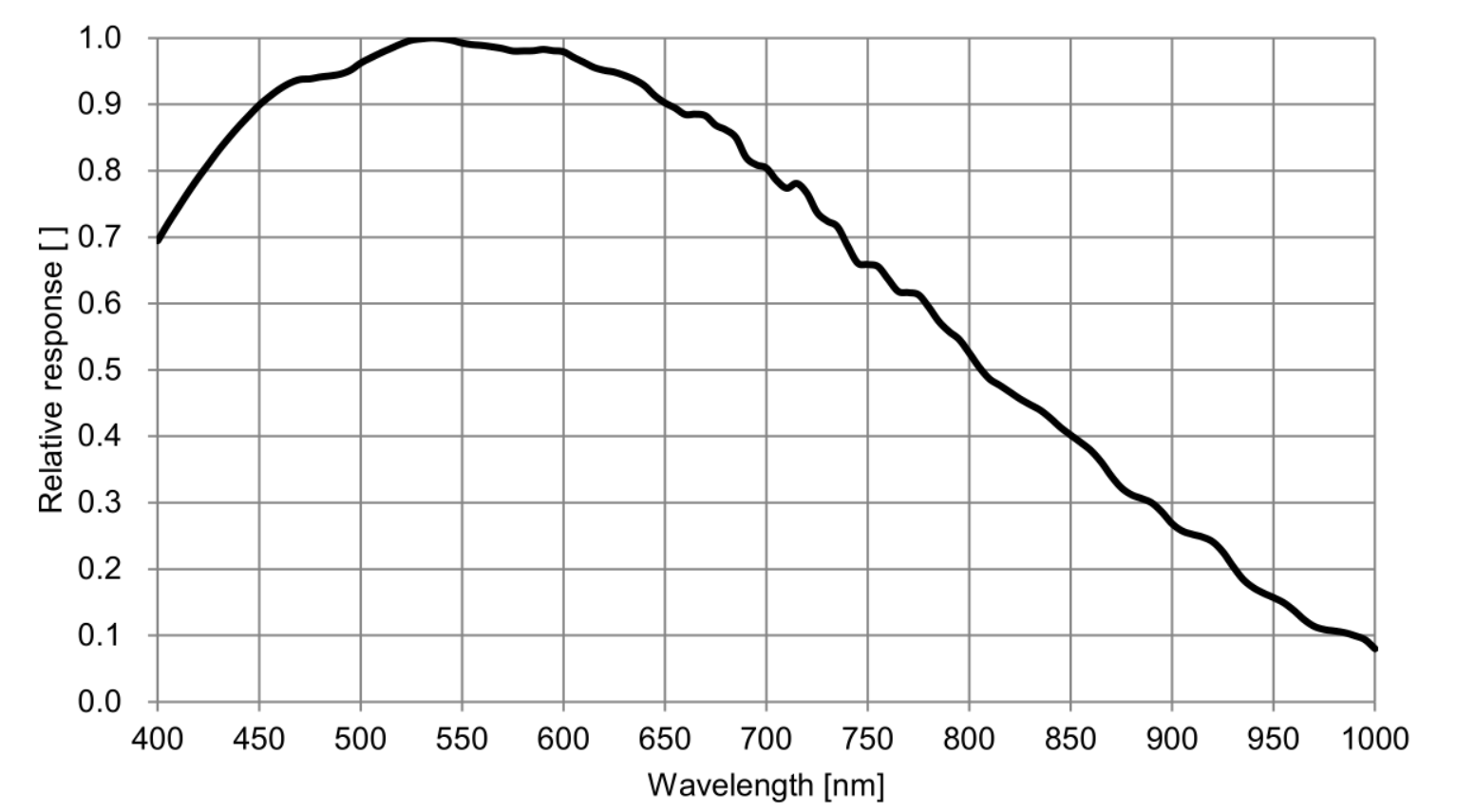
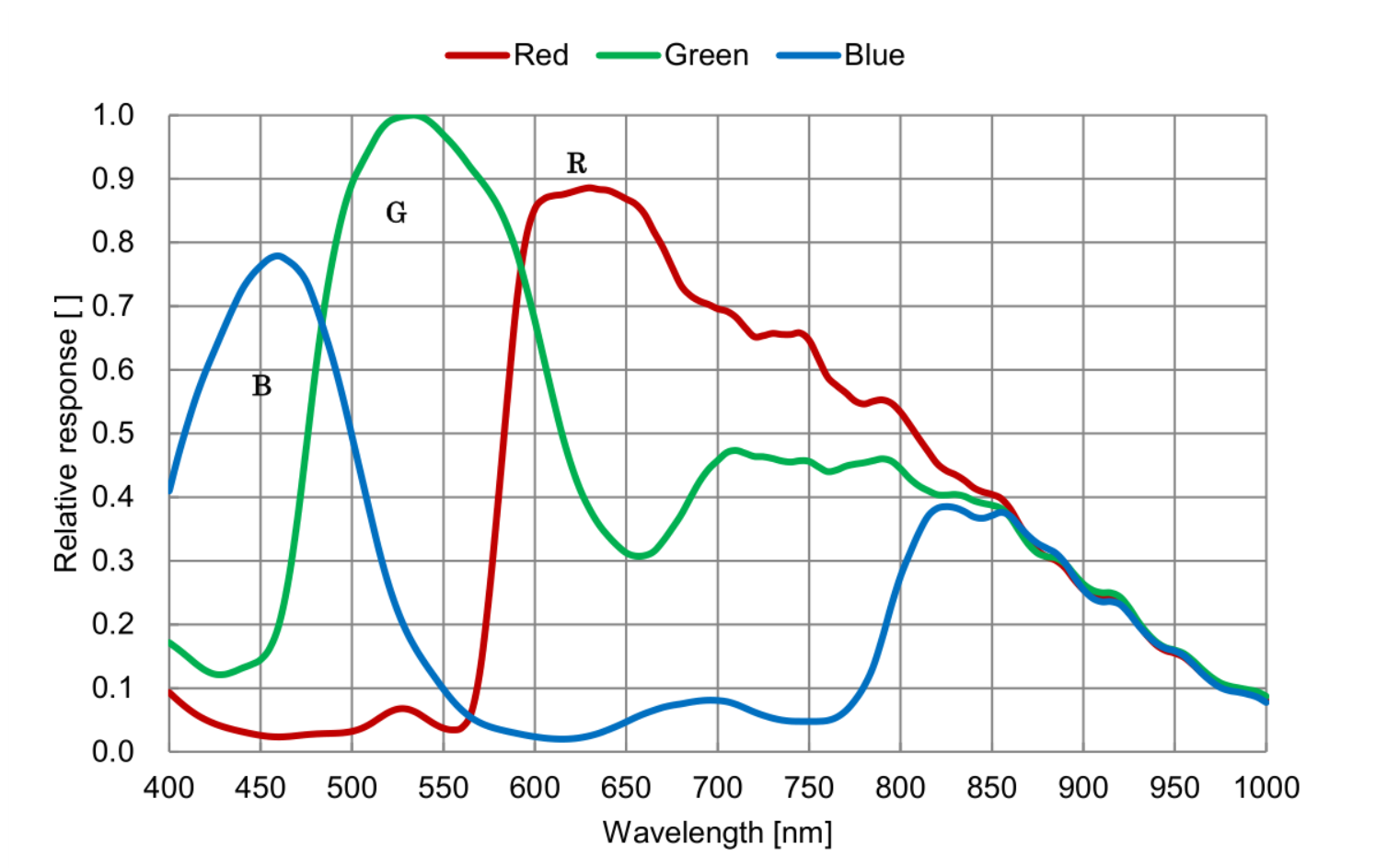
Mechanical dimensions
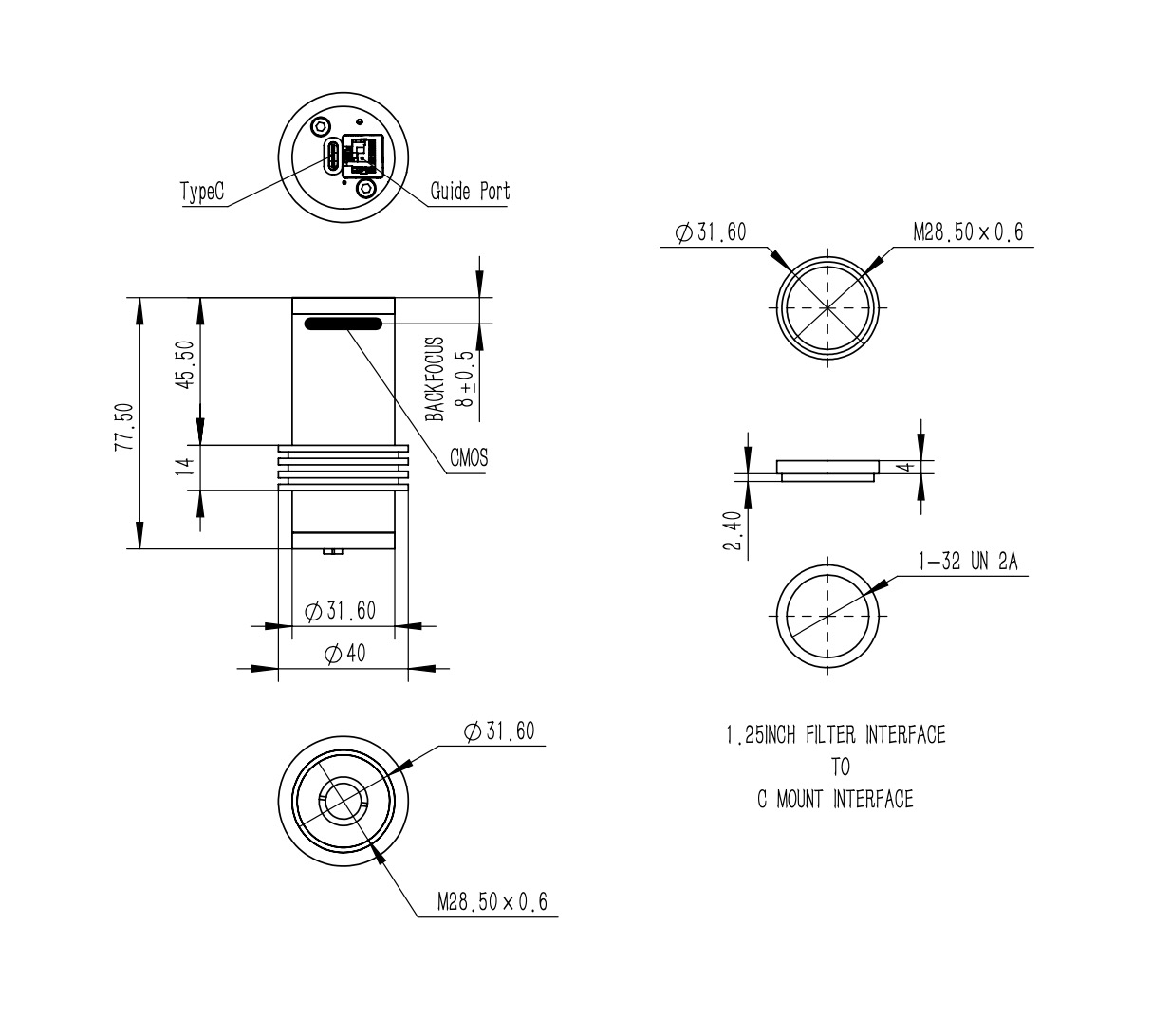
Accessories
